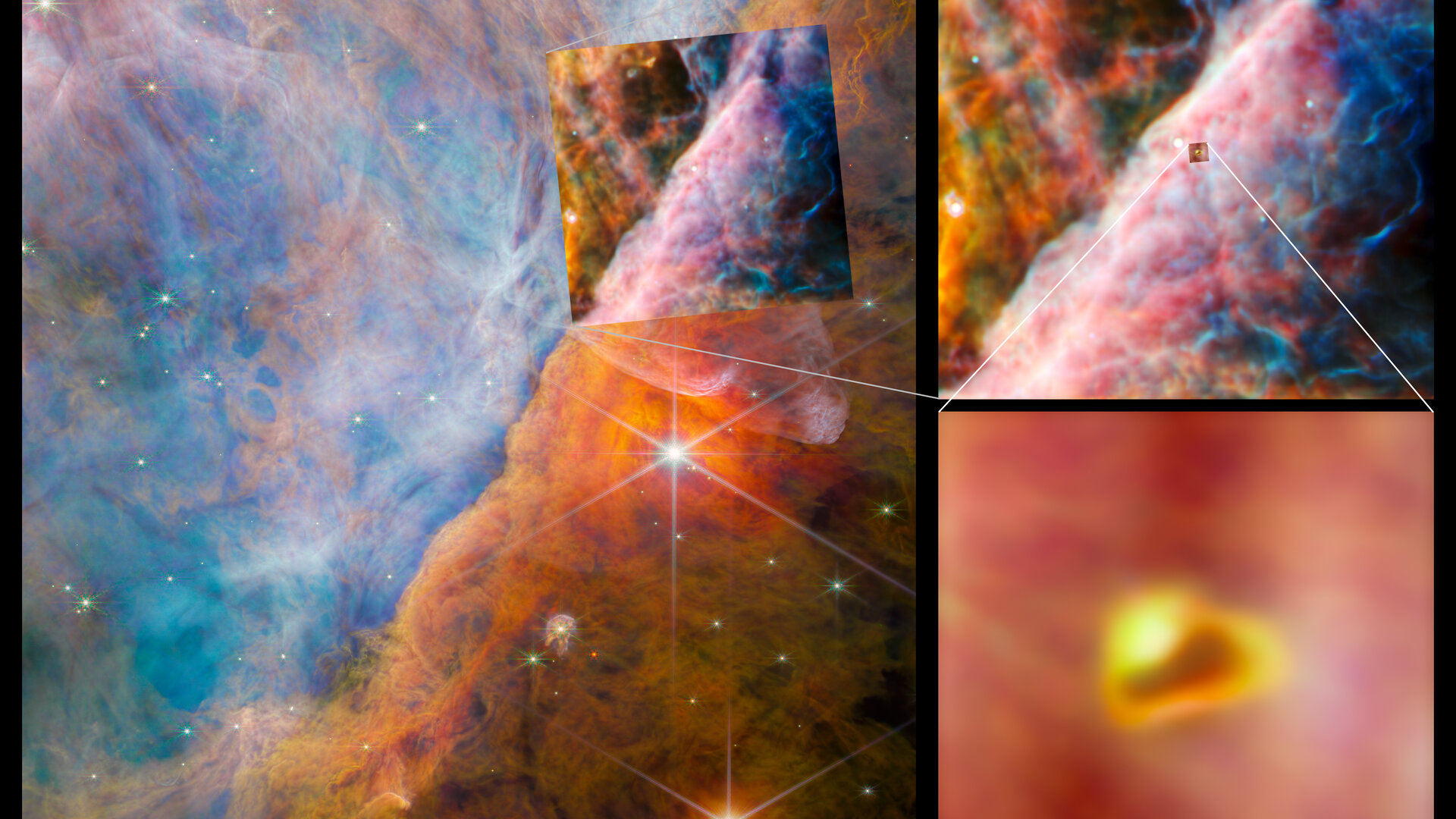
The James Webb Space Telescope (JWST) has spotted a carbon molecule thought to be a cornerstone of interstellar chemistry in a planet-forming disk of gas and dust around a young star, a recent study reports.
JWST detected the carbon compound methyl cation (CH3+) in a protoplanetary disk system called d203-506, which lies around 1,350 light-years from Earth in the Orion Nebula. The star at the center of the system is a red dwarf just 10% as massive as our sun, and the entire system is being bombarded by strong ultraviolet radiation from nearby hot, young, massive stars.
Scientists theorize that most protoplanetary disks are subject to intense ultraviolet radiation during certain periods, because stars tend to form in groups that include massive, ultraviolet-producing stars. This includes our own cosmic neighborhood; evidence from meteorites suggests that our infant solar system was subject to a heavy bombardment of such radiation as it formed about 4.5 billion years ago.
Related: James Webb Space Telescope — A complete guide

Such intense radiation bombardment should destroy the complex organic molecules needed to form the basis of life. But we know this isn't always the case; life exists on Earth, after all. The discovery of methyl cation in a region where planets that could eventually host life are forming may help untangle this cosmic riddle and help scientists better understand how and where in the universe life could get started.
Despite being a relatively simple molecule, methyl cation has been at the center of cosmic carbon chemistry theories since the 1970s due to the fact that, like other carbon-containing ions (molecules with an electrical charge), it reacts readily with a wide range of other molecules. This means it can kick-start the growth of more complex carbon molecules, even at low temperatures.
Carbon chemistry like this is of particular interest to astrobiologists, because life as we know it is carbon-based. Until JWST came long, however, astronomers weren't able to detect this carbon molecule in relatively distant planet-forming disks.
This is because observing protoplanetary disks with radio telescopes requires molecules with what is known as a "permanent dipole moment," meaning that they have a positive and a negative "end." Methyl cation lacks a permanent dipole moment. And ground-based optical telescopes experience too much atmospheric interference to spot it from the light it absorbs and emits, a process called spectroscopy. That means spotting methyl cation requires an incredibly sensitive space telescope such as JWST, which began operating in summer of 2022.
"This detection of CH3+ not only validates the incredible sensitivity of the JWST but also confirms the postulated central importance of CH3+ in interstellar chemistry," study team member Marie-Aline Martin, a researcher at Paris-Saclay University, said in a statement.
With regard to the puzzle of how organic molecules could survive being blasted by ultraviolet radiation, Martin and colleagues think they may have a solution. The team suggests that methyl cation may actually arise in such locations directly as the result of ultraviolet radiation providing the energy needed for the molecule to form.
There are other signs that ultraviolet radiation bombardment can profoundly affect protoplanetary disks as well. For example, JWST observations suggest that disks that aren't heavily irradiated have more water than those that are, such as d203–506, in which the team detected no water.
"This clearly shows that ultraviolet radiation can completely change the chemistry of a protoplanetary disk," study lead author and University of Toulouse scientist Olivier Berné said in the same statement. "It might actually play a critical role in the early chemical stages of the origins of life by helping to produce methyl cation — something that has perhaps previously been underestimated."
The research was published in April in the Astrophysical Journal Letters.







